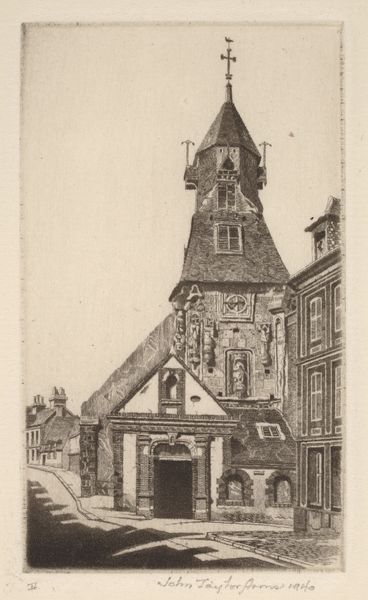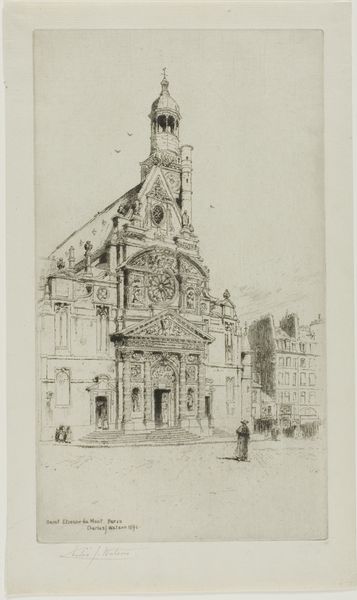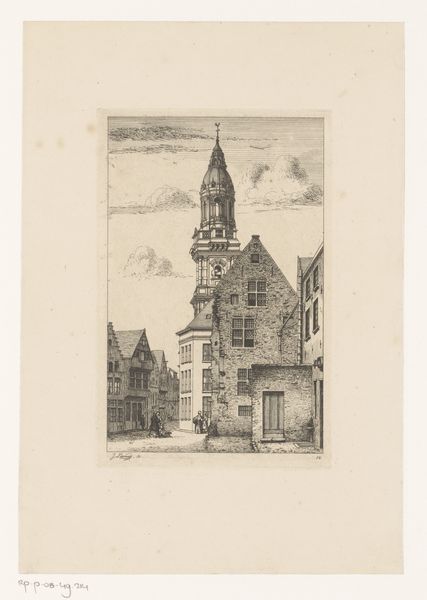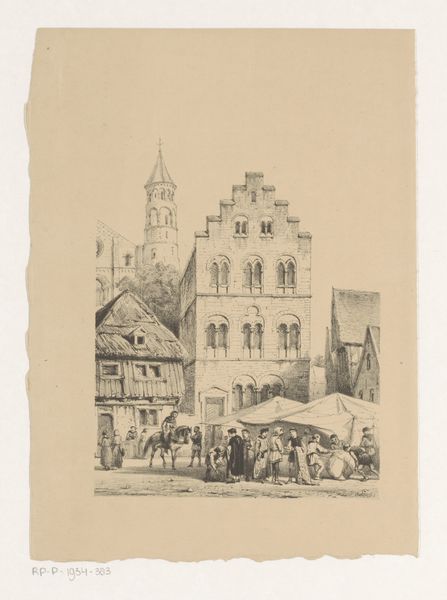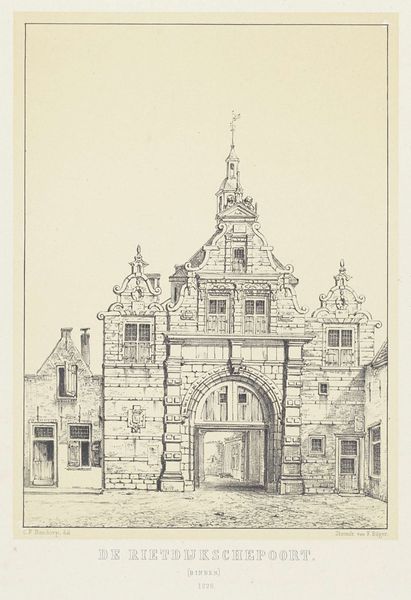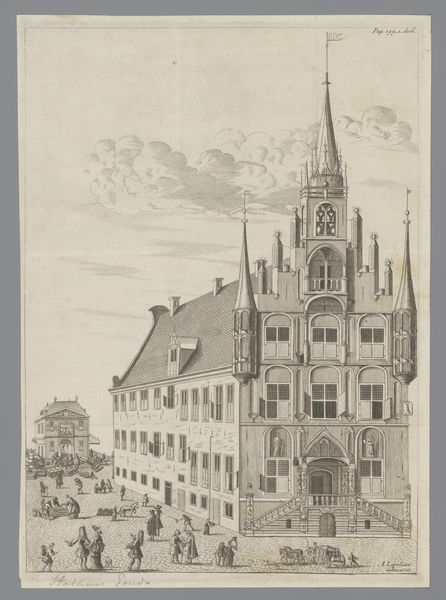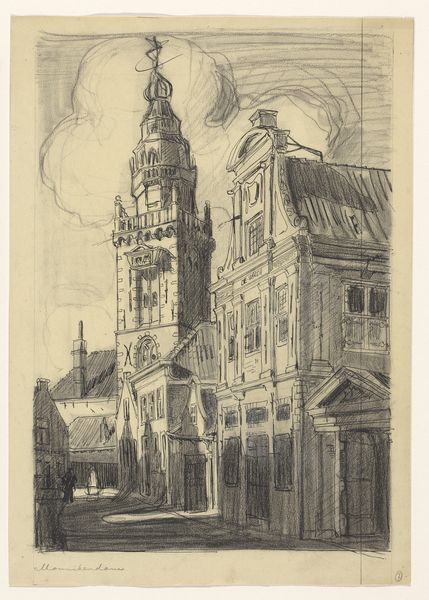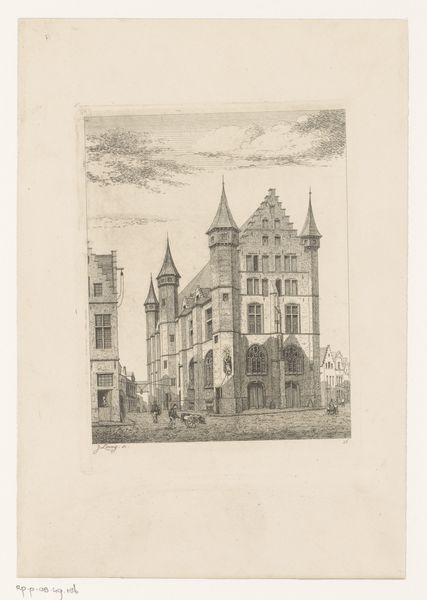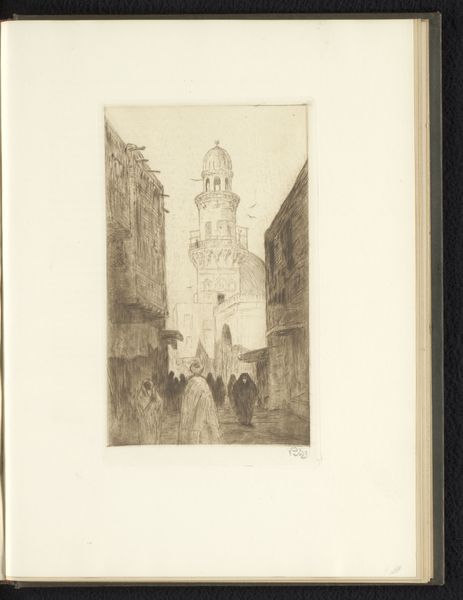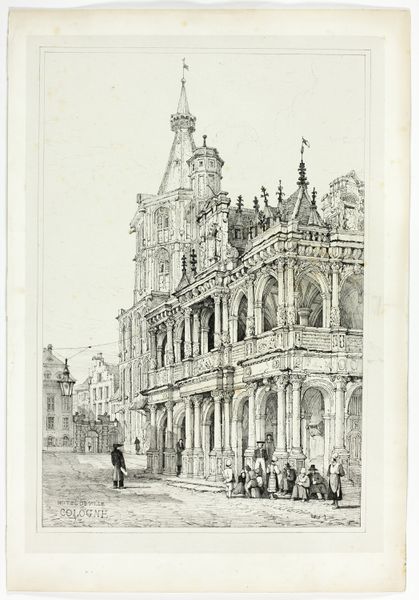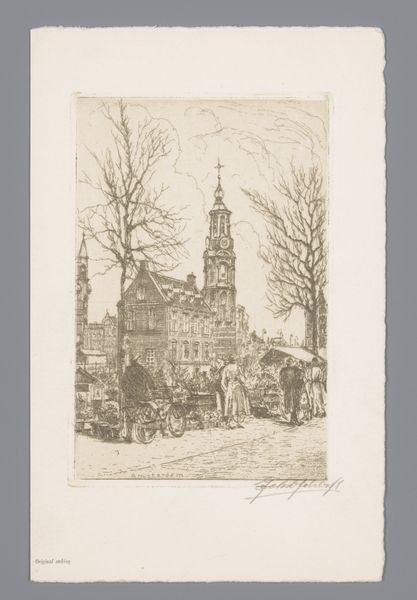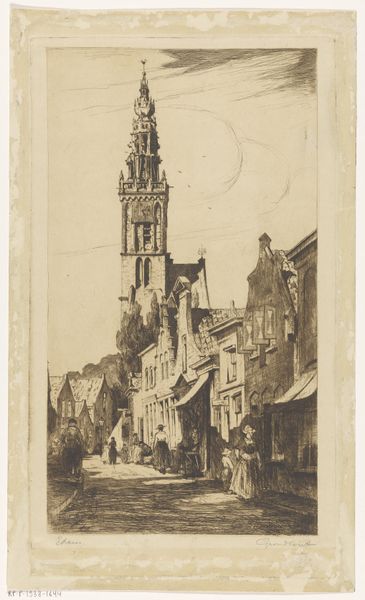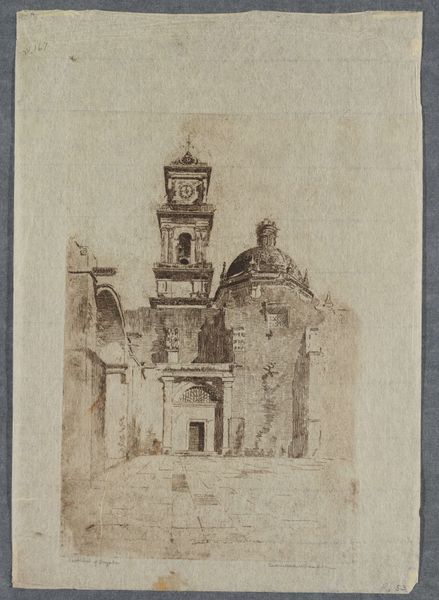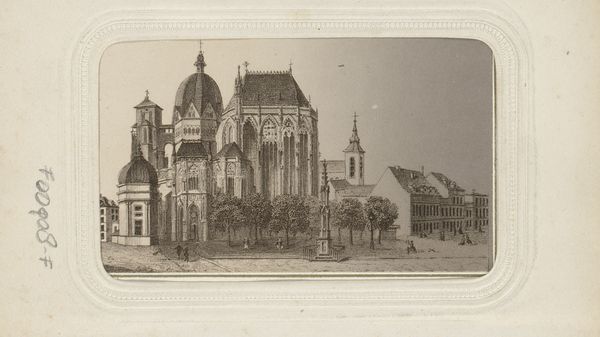
drawing, print, etching, architecture
#
drawing
# print
#
etching
#
old engraving style
#
cityscape
#
architecture
#
realism
Dimensions: height 457 mm, width 334 mm
Copyright: Rijks Museum: Open Domain
Editor: This is "Saint-\u00c9tienne-du-Mont in Parijs" by Etienne Bosch, created sometime between 1873 and 1931. It's an etching, a type of print, depicting a Parisian cityscape. I'm struck by how the light almost seems to be a character in itself, highlighting the architecture but also casting some interesting shadows. What catches your eye about this piece? Curator: What strikes me is the deliberate portrayal of power structures inherent in urban spaces. Think about it: here you have this imposing church, Saint-\u00c9tienne-du-Mont, rendered with meticulous detail. Yet, the figures in the foreground seem almost dwarfed by its presence. This isn’t just a depiction of a building; it's a commentary on the role of the church, and perhaps more broadly, religion and institutions, within the lives of ordinary Parisians. How does this power dynamic resonate with you? Editor: That’s a really interesting perspective. I was mainly seeing the artistry in the etching itself and the architectural detail, but I hadn't thought about the social implications of the composition. Curator: Exactly! Bosch, consciously or unconsciously, uses perspective and scale to establish a hierarchy. The building dominates, suggesting the pervasiveness of institutional influence. Even the shadows could be interpreted as symbolic of the limitations placed upon individual agency within such a system. Where do we find this sense of inequality in today’s world? Does it challenge our notion of public versus private? Editor: That’s a powerful way to look at it. So, beyond the aesthetic, you see this artwork as a lens through which we can examine historical power dynamics and societal structures? Curator: Precisely. Art serves as a mirror, reflecting not just beauty but also the often-uncomfortable realities of social and political life. This piece encourages us to critically analyze the visual cues embedded in our everyday surroundings. It’s never ‘just’ architecture, it represents society. Editor: I'll definitely be looking at cityscapes differently now! It's fascinating to consider how art can unveil these deeper, often unspoken, aspects of our culture.
Comments
No comments
Be the first to comment and join the conversation on the ultimate creative platform.
